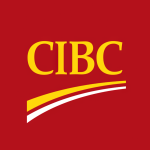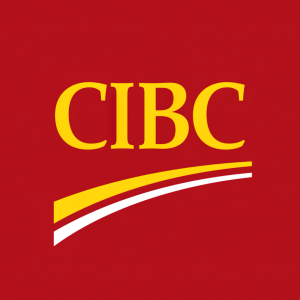Welcome to our dedicated page for Canadian Imperial Bank of Commerce SEC filings (Ticker: CM), a comprehensive resource for investors and traders seeking official regulatory documents including 10-K annual reports, 10-Q quarterly earnings, 8-K material events, and insider trading forms.
CIBC’s cross-border banking empire spans Canadian mortgages, U.S. commercial lending and global capital markets—so its SEC disclosures pack dense data on CET1 ratios, credit losses and dividend capacity. If you have ever searched "CIBC SEC filings explained simply" or wondered how currency swings flow through risk notes, you know the challenge.
Here you’ll find every document the Canadian Imperial Bank of Commerce files with EDGAR, from its annual Form 40-F—our platform tags it "CIBC annual report 10-K simplified"—to each 6-K that doubles as the "CIBC quarterly earnings report 10-Q filing" investors ask about. Need activity alerts? The moment executives file "CIBC insider trading Form 4 transactions" or "CIBC executive stock transactions Form 4", our AI flags them. Material announcements appear under "CIBC 8-K material events explained", while board pay details live inside the "CIBC proxy statement executive compensation" section.
Stock Titan layers AI-powered summaries, real-time updates and expert context on top of raw filings. Scan a side-by-side "CIBC earnings report filing analysis" that highlights net interest margin shifts, compare segment revenue in seconds, or set push notifications for "CIBC Form 4 insider transactions real-time". Whether you’re monitoring mortgage exposure or understanding CIBC SEC documents with AI, every filing type—40-F, 6-K, 8-K, Form 4 and more—lands here first, already distilled so you can act on insight, not pages.
Canadian Imperial Bank of Commerce is issuing senior market-linked notes tied to the lowest-performing of Target, Chipotle Mexican Grill and NIKE Class B stock, with a total offering of $1,880,000 at $1,000 per security. The notes pay a quarterly contingent coupon at 25.80% per annum only if the lowest-performing stock on each determination date is at or above its coupon threshold, set at 75% of its starting price, with a “memory” feature that can make up previously missed coupons.
From November 2026 to August 2028, the notes are automatically called at face value plus due coupons if the lowest-performing stock is at or above its starting price. If not called, principal is protected at maturity only if the lowest-performing stock stays at or above 75% of its starting price; below that level, investors lose more than 25%, up to all principal. The notes are unsecured obligations of CIBC, have an estimated value of $916.50 per security, are not listed on any exchange, and are subject to CIBC’s credit risk and complex U.S. and Canadian tax treatment.
Canadian Imperial Bank of Commerce (CIBC) is offering senior global medium‑term notes that are market-linked, auto-callable and carry contingent coupons with a memory feature. The securities are tied to the lowest performing of Amazon.com, Alphabet Class A and Meta Platforms Class A stock. Each security has a $1,000 face amount, with a Contingent Coupon Rate of at least 17.50% per annum, payable quarterly only if the lowest performing stock on the relevant determination date is at or above 70% of its starting price. Automatic call can occur quarterly from June 2026 through September 2028 if the lowest performing stock is at or above its starting price, returning face amount plus due coupons. If the notes are not called and the lowest stock ends below 70% of its starting price at maturity in December 2028, principal is reduced in full proportion to that decline, potentially to zero. CIBC’s estimated value on the pricing date is expected to be at least $900 per security, below the $1,000 offering price.
Canadian Imperial Bank of Commerce is offering senior market-linked notes tied to the lowest performing of Amazon.com, Dell Technologies and Meta Platforms, maturing in November 2027. The notes are issued at $1,000 per security, for a total original offering price of $2,460,000, with net proceeds to CIBC of $2,402,805.
The notes pay a contingent coupon of 19.50% per annum, assessed quarterly, only if the lowest-performing stock on each determination date is at or above 60% of its starting price, with a “memory” feature that can catch up missed coupons. They may be automatically called quarterly from May 2026 to August 2027 if that lowest stock is at or above its starting price. If not called, investors receive full principal only if the lowest stock on the final date is at or above its 60% downside threshold; otherwise repayment is reduced in line with the stock’s decline, potentially to zero. The issuer’s estimated value is $927.80 per security, and all payments depend on CIBC’s creditworthiness.
Canadian Imperial Bank of Commerce (CM) is issuing $1,592,000 aggregate principal amount of 4.35% senior unsecured callable notes due November 26, 2030. The notes pay interest semi-annually on May 26 and November 26, starting May 26, 2026, at a fixed 4.35% annual rate, with repayment of 100% of principal at maturity if not called.
CIBC may redeem the notes in full at 100% of principal plus accrued interest on November 26 of each year from 2027 through 2029. The notes are bail-inable debt securities subject to Canadian bank resolution powers, meaning they can be converted into CIBC common shares or varied or extinguished if CIBC becomes non-viable. They are not insured by Canadian or U.S. deposit insurers, will not be listed on any exchange, and may have limited secondary market liquidity. Underwriting discounts are 0.613% per $1,000 note, with net proceeds to CIBC of $1,582,241.04.
Canadian Imperial Bank of Commerce is issuing unsecured Senior Global Medium-Term Notes that are auto-callable, contingent coupon securities linked to the worst performer among Amazon (AMZN), Alphabet Class A (GOOGL) and NVIDIA (NVDA), maturing on November 22, 2028. Each security has a $1,000 face amount and an original offering totaling $3,462,000, with proceeds to CIBC of $976.75 per security after underwriting. The contingent coupon rate is 12.81% per annum, paid quarterly only if the lowest-performing stock on the observation date is at or above 50% of its starting price, with a memory feature for unpaid coupons. Automatic call can occur quarterly from May 2026 through August 2028 if the lowest-performing stock is at or above its starting price. If not called, principal is repaid in full only if the lowest-performing stock on the final date is at or above 50% of its starting price; otherwise investors are fully exposed to downside and can lose most or all of principal. CIBC’s estimated value is $926.90 per security, below the $1,000 offering price, reflecting structuring, distribution and hedging costs.
Canadian Imperial Bank of Commerce (CIBC) is offering $4,508,000 aggregate principal amount of 5.15% Callable Notes due November 5, 2040. The notes pay interest semi-annually on May 17 and November 17, starting May 17, 2026, and return 100% of principal at maturity if not redeemed earlier.
CIBC may redeem the notes at par plus accrued interest on November 17 of each year from 2028 through 2039. The price to public is $1,000 per note, with a $20 underwriting discount per $1,000; net proceeds to CIBC are $4,417,840. The notes are senior unsecured, will not be listed, and are bail-inable under Canadian bank resolution powers, meaning they can be converted into common shares or varied/extinguished in a resolution scenario. Minimum denomination is $1,000, and delivery is expected on November 17, 2025 via DTC.
Canadian Imperial Bank of Commerce (CIBC) is offering $9,305,000 aggregate principal amount of 4.30% Senior Global Medium‑Term Callable Notes due November 14, 2030. The notes pay 4.30% per annum, with interest paid semi‑annually on May 14 and November 14, starting May 14, 2026. CIBC may redeem the notes, in whole but not in part, at 100% of principal plus accrued interest on November 14 of 2027, 2028, or 2029.
The notes are senior unsecured obligations of CIBC, will not be listed on any exchange, and are subject to CIBC’s credit risk. They are bail‑inable under the Canada Deposit Insurance Corporation Act, meaning they can be converted into common shares or varied/extinguished in a resolution scenario. Minimum denomination is $1,000. Pricing terms include a per‑note price of $1,000, an underwriting discount of $6.22, and total proceeds to CIBC of $9,247,122.90. Delivery is expected November 14, 2025 via DTC.
Canadian Imperial Bank of Commerce is offering $1,419,000 aggregate principal amount of 4.00% Callable Notes due November 14, 2028. The notes pay interest semi‑annually on May 14 and November 14, beginning May 14, 2026, and return 100% of principal at maturity if not redeemed earlier.
CIBC may redeem the notes, in whole but not in part, at par plus accrued interest on November 14, 2026 or November 14, 2027. The notes are senior unsecured obligations, will not be listed, and are bail‑inable under the CDIC Act.
The price to the public is $1,000 per note (fee‑based accounts: $995.50). The underwriting discount is $4.50 per $1,000, for total underwriting of $6,385.50, resulting in proceeds to CIBC of $1,412,614.50. Settlement is expected on November 14, 2025 through DTC in $1,000 minimum denominations.
Canadian Imperial Bank of Commerce (CIBC) is offering 1,704,971 units of Autocallable Strategic Accelerated Redemption Securities linked to an international equity index basket at $10.00 per unit, for a total public offering price of $17,049,710.00. Proceeds to CIBC are $9.80 per unit ($16,708,715.80), reflecting a $0.20 underwriting discount and a $0.05 hedging-related charge per unit. The initial estimated value is $9.554 per unit.
The notes are automatically callable if the Basket is at or above the Starting Value on any Observation Date, paying $10.965 if called in year one, $11.930 in year two, or $12.895 in year three; otherwise they mature on October 26, 2028 with 1-to-1 downside exposure. The Basket weights are: EURO STOXX 50 (40%), FTSE 100 (20%), Nikkei 225 (20%), Swiss Market Index (7.5%), S&P/ASX 200 (7.5%), and FTSE China 50 (5%).
These senior unsecured notes pay no periodic interest, are subject to CIBC credit risk, and will not be listed; secondary liquidity may be limited.


